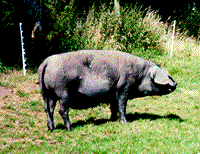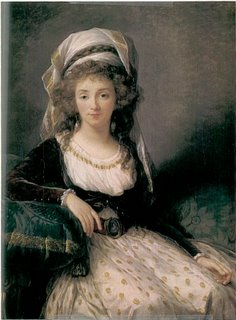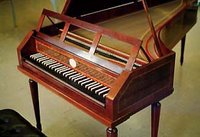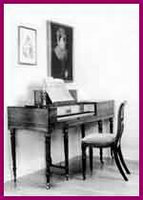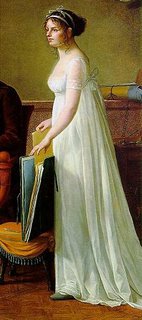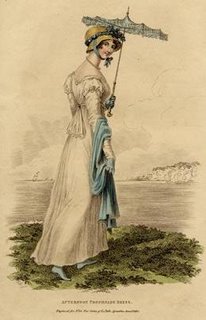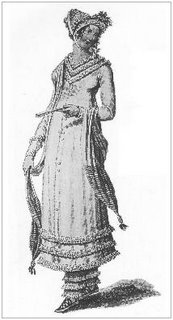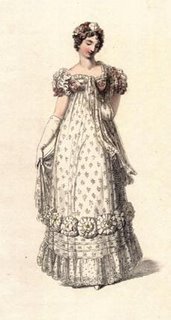What a sad reflection on everyday life, or at least everyday life with the Riskies…fairy princesses yesterday, pigs today. In my tradition of eloquently bringing down the tone, I thought we should take a look at farm animals of the regency or earlier, and I’m unapologetically concentrating on pigs. Like my hero Adam in Dedication, I’m quite fond of pigs. They do spend a lot of time squelching in mud and making disgusting noises, but they are very intelligent and can be quite friendly. Did you know that if you scratch a pig’s back, its hind legs will give way and it will collapse in a pleasured heap? They can also be extremely aggressive (in an earlier version of Dedication, the villain was attacked and eaten, all except for his watch, by Adam’s pigs). It’s remarkable that creatures bred for centuries to be eaten can have so much personality and smarts.
In 1807, Mr. Richard and Mr. Edward Toomer trained a pig as a retriever in the New Forest (honestly, this is true). She was named Slut for her fondness for wallowing in mud, and excelled at her vocation: When called to go out shooting she would come home off the forest at full stretch, and be as elevated as a dog upone being shown the gun. (By the way, I do not recommend doing a Google seach for “pig hunt slut.” The results are not for the faint of heart.)
There’s a lot of interest in England in saving old breeds and here are some pics of some of these porcine beauties: from left to right, the Old Black, the Gloucester Old Spotted, and the British Saddleback. Most original British breeds are actually not that ancient–they derive from the great interest in agriculture of the eighteenth century, when pigs from the near east were imported to improve native species. Despite their limited gene pool, these “heirloom” pigs are resistant to modern pig diseases and also have better maternal instincts (which probably translates as being less likely to eat, or squash, their offspring) than their factory-farmed cousins.
 In my pig research, I also discovered that the wild boar, sus scrofa, extinct for three centuries, is making a comeback in England. I don’t know how specifically British the species is, since they are imported boars who escaped and are now surprising picnickers and annoying farmers. Both James I and Charles I were among those who attempted to re-introduce boars, for hunting purposes, with mixed success: not only will boars root where they please, but they taste good. Here’s a close up of the tusks of a two-year-old male.
In my pig research, I also discovered that the wild boar, sus scrofa, extinct for three centuries, is making a comeback in England. I don’t know how specifically British the species is, since they are imported boars who escaped and are now surprising picnickers and annoying farmers. Both James I and Charles I were among those who attempted to re-introduce boars, for hunting purposes, with mixed success: not only will boars root where they please, but they taste good. Here’s a close up of the tusks of a two-year-old male.

Despite the aggressive mouth furniture of the adults, though, you have to admit the babies are adorable. Aaaaw!
Any other good Regency pig tales? The only example I can think of is Mr. Knightley giving Miss Bates a joint of pork in good neighborly fashion.

